The risk of dementia and Alzheimer's disease in the past 10 years, the latest results of the Joint Research Team of Fudan Brain Research Institute and Huashan Hospital are released
Author:Report Time:2022.09.25
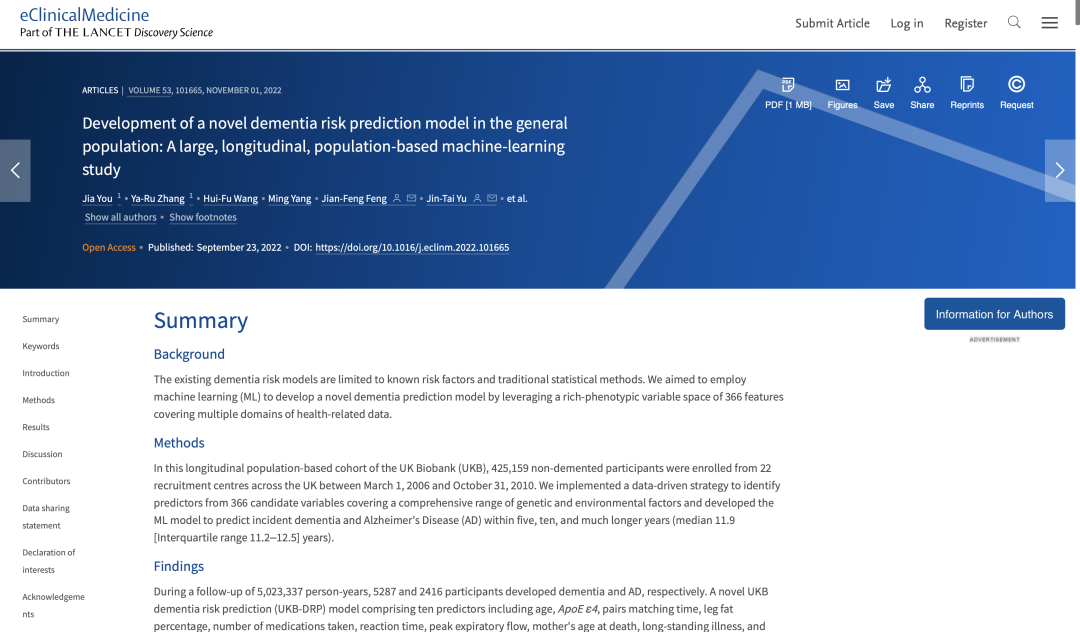
Alzheimer is a degenerative disease of the nervous system that is hidden and developed. Once sick, the brain's memory, thinking ability and other functions will be removed like "rubber tadpoles", becoming the main death and disability of the elderly people. One of the diseases has been listed as a major global health problem in the 21st century.
With the acceleration of social aging, the number of people with dementia worldwide in 2050 is expected to increase from 57 million in 2019 to 153 million. There are currently about 15 million dementia patients in my country, ranking first in the world. The course of dementia is long, the trend of younger is obvious, and pathological changes have occurred in 20 years before the onset, but the best treatment time window is often missed during clinical diagnosis. Research on early predictions and early intervention for dementia is imminent.
Recently, Professor Feng Jianfeng/Cheng Wei Young Researcher Team of Brain Intelligence Science and Technology of Fudan University and Professor Huashan Hospital of Fudan University Professor Huashan Hospital, Jiantai Clinical Research Team to carry out multi -disciplinary cross -joint joint research, and use biomedical big data and artificial intelligence algorithm development to develop The new dementia risk prediction model is named UKB-DRP. This model is a general model that can predicts a forward -looking intelligent prediction of the risk of dementia and its main subtype (Alzheimer's disease) at the same time. Precision prediction.
On September 23, the relevant results were "Development of a Nopel DEMENTIA RISK PRDICEL in the General Populating: A Large Longing Modinal Popultive. -Learning Study) Published in the "Eclinicalmedicine" in the "Liuye knife".
The research team used the British biological sample library queue to follow up with 42,5159 non-Alzheimer's people. During the follow-up of 11.9 years, 5,287 participants were diagnosed with new dementia.
Studies are incorporated into multi -dimensional health related indicators such as cognition, biochemistry, behavior and genes of participants, and strictly screening and quality control are carried out based on clinical experience. Subsequently, the machine learning algorithm was used to calculate the importance of each indicator for the dementia prediction model. Finally, the top ten indicators were selected as the dementia prediction factor, and the UKB-DRP dementia prediction model was constructed.
These ten prediction factors include: age, liposuction of lipoprotein E (APOE) gene, cognitive pairing test duration, leg fat percentage, number of medication, cognitive response test duration, exhalation peak flow, mother's death age, chronic diseases and chronic diseases, and chronic diseases and chronic diseases and chronic diseases and chronic diseases and chronic diseases and chronic diseases and chronic diseases and chronic diseases and chronic diseases and chronic diseases and chronic diseases and chronic diseases and chronic diseases and chronic diseases and chronic diseases and chronic diseases and chronic diseases and chronic diseases and chronic diseases and chronic diseases and chronic diseases and chronic diseases and chronic diseases and chronic diseases and chronic diseases and chronic diseases and chronic diseases and chronic diseases and chronic diseases and chronic diseases and chronic diseases and chronic diseases and chronic diseases and chronic diseases and chronic diseases and chronic diseases and chronic diseases. Average red blood cell volume.
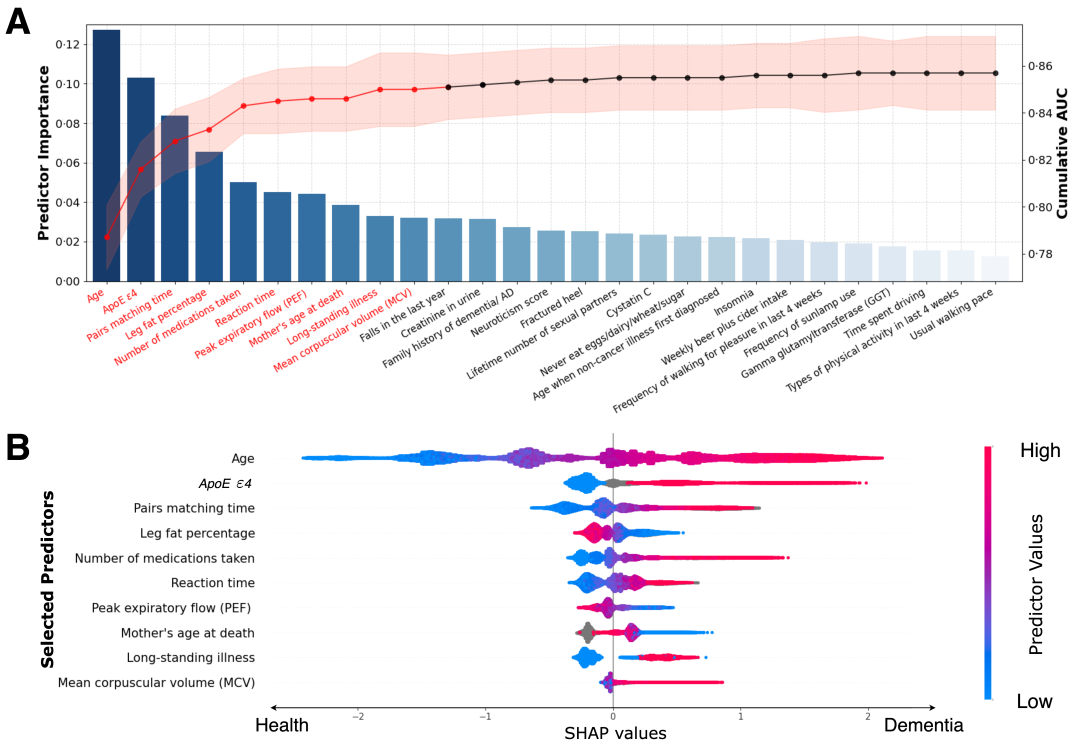
The UKB-DRP dementia prediction model has a higher predictive effect of all dementia and Alzheimer's disease in the next five years, ten years, or even more. The AUC value of the disease is higher, up to 0.86-0.89.
The research team further evaluated the risk calibration of the UKB-DRP predicting dementia model. The results showed that the observation risks and prediction risks after risk correction were well matched, that is, the new dementia incident and observed dementia incidents were compared with the model prediction. high. In addition, the research team also compares the UKB-DRP dementia prediction model with the internationally predicted model (such as caid, DRS, Anu-ADRI). Forecast model (below).
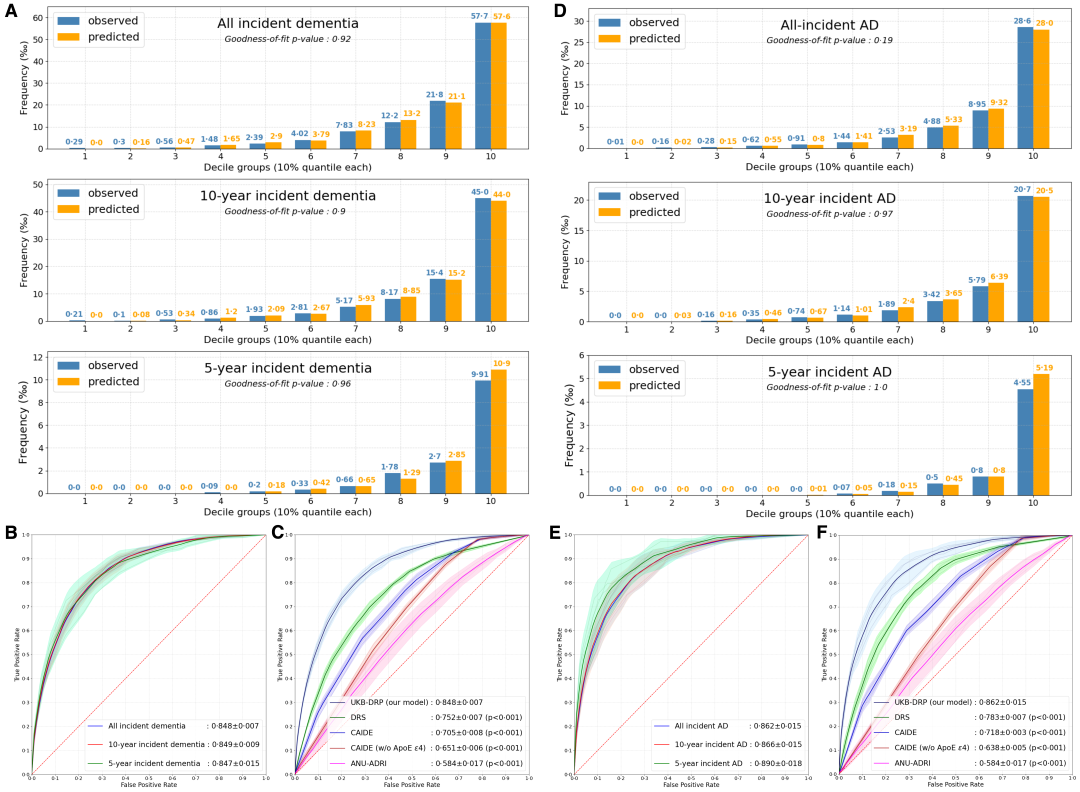
The advantage of the UKB-DRP dementia prediction model is that the ten predictive factors included in the questionnaire can be quickly obtained from questionnaire surveys, simple physical examination and conventional blood examination. Compared with other complicated forecast factors such as expensive whole genome sequences, lumbar spine puncture or PET images, the UKB-DRP dementia prediction model can be widely used in early screening of medical units at all levels.
In order to facilitate everyone's one-click operation, the research team has developed a web version application of the UKB-DRP dementia prediction model (https://jiayou0907.shinyapps.io/ukb-drp-tool/).
Users can enter the relevant information of individuals to be tested on the left side of the page to obtain the risk of dementia in five, ten years, and longer.
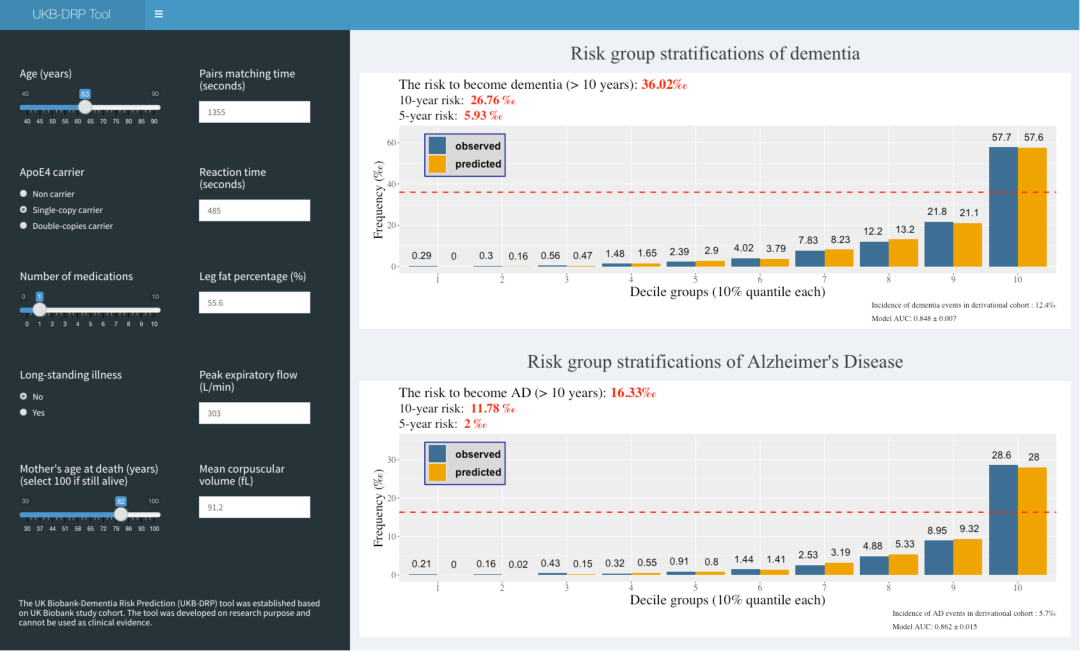
Professor Feng Jianfeng, Dean of the Institute of Intelligence Science and Technology of Brain -like Intelligence, said: "This study based on data -based ideas, processing and excavating the health information of massive middle -aged and elderly people through artificial intelligence algorithms, and a hybrid driver of medical big data and intelligent models has been built. Early dementia prediction model provides a new theoretical basis for improving the ability to judge the early risk of neurodegenerative diseases and prevent diseases. In the next step, we will continue to focus on the major health problems of the brain health of the elderly. Parkinson and other kinds of elderly brain health killer diseases have been carried out to provide scientific and accurate identification methods and practical guidance for early recognition of different disease risks. "
Professor Feng Jianfeng, Cheng Wei, and Professor Tulip of Huashan Hospital affiliated to Fudan University of Fudan University Institute of Intelligence Science and Technology of Fudan University, as the author of the article, the post -doctorate of the Fudan University Institute of Brain Research Institute, and PhD in Huashan Hospital affiliated to Fudan University Zhang Yaru is the first author. The research has received funding support for the National Natural Science Foundation of China, the national key research and development plan, and the major projects in Shanghai. The work is another breakthrough in the cooperation between Brain Intelligence Science and Technology Research Team and Huashan Hospital Clinical Research Team in recent years to form a cross -disciplinary cross -disciplinary cross -disciplinary crossing team in recent years.
The early work of the cooperative team focused on the early prevention and treatment of Alzheimer's disease and dementia. By digging the multi -group of scientific table -type data 1 1, it confirmed the grip and paceing step, body fat 3, and inflammation 4,5, etc. The series of new risk factors, and in -depth inquiring the important role of exercise and sleep 6,7, antidepressant treatment 8, cataract treatment 9 and outdoor sunshine 10 and other important role in reducing the risk of dementia.
Based on the excavated biomarkers, the research team draws their natural changes, and combines multi -modal brain images to further reveal its neural image mechanism to provide new targets for AD protection therapy. These preliminary studies laid a good foundation for the work. The cooperation team established long -term stable scientific research cooperation relationships, co -hosted the "AD Intelligent Forecast Model" medical worker cross -project of Fudan University, and jointly responsible for the construction of neurodegenerative disease queue in Huashan Hospital. There have been more than 10 articles in related fields, including Alzheimer ’s Dementia, Molecular Psychiatry, and Nature Aging.
Dean Mao Ying of Huashan Hospital emphasized that the combination of medical and medical and medical workers is the biggest hotspot of the current new medical construction. Big data and artificial intelligence have brought unprecedented development opportunities for smart medical care and precision diagnosis and treatment. Fudan University is a university with obvious advantages in the comprehensive discipline of literature and science and medicine. It breaks the barriers of disciplines and strengthens the cooperation in medical research. It is essential for improving the level of scientific research that is ordered to solve clinical problems. In the next step, with major projects as a link, we will also explore how to form a cross -disciplinary team, establish an institutional environment that is conducive to the employment of teachers, interdisciplinary training, and interdisciplinary sharing of resources, and promote scientific and technological innovation of foundation and clinical clinical.
Author: Jiang Peng
Edit: Jiang Peng
Editor in charge: Fan Liping
- END -
Shandong Laiyang: Precise pulse tax dividends directly to enjoy quickly
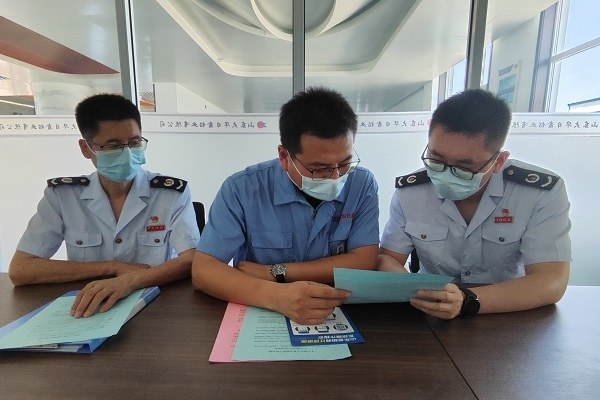
(Correspondent Gai Jianfei) At the beginning, we did not know the policy. Thanks t...
Fire eyes!My brother recognizes that the thief is directly open to the security card mouth
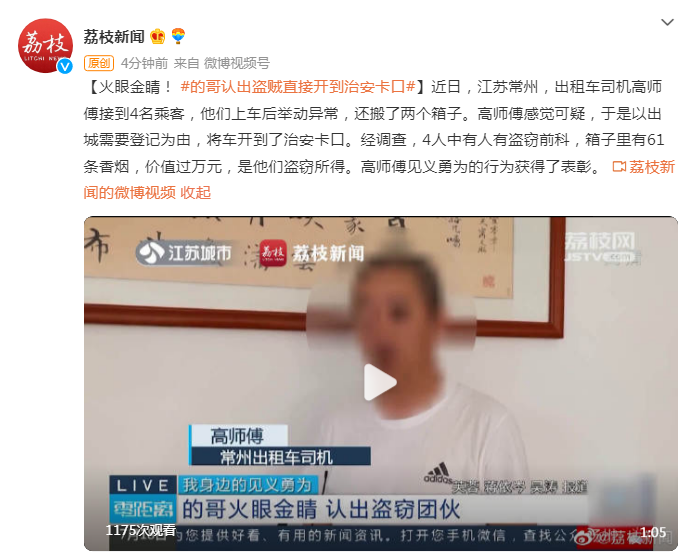
Recently, in Changzhou, Jiangsu, Master Gao, a taxi driver, received four passenge...